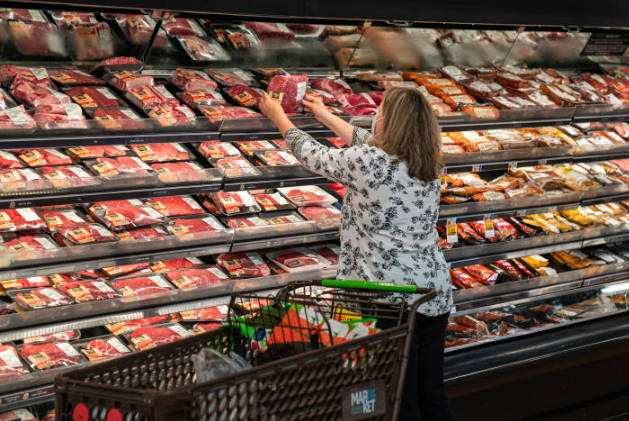As summer barbecues become more expensive, Stew Leonard Jr. president and CEO of Stew Leonard’s is noticing a change in consumer behavior.
“We can tell our customers that their shopping lists are starting to get more frugal,” said Leonard, who owns seven grocery stores.
The average cost of a summer picnic for 10 people has risen to $69.98 this year, up 17 percent from a year earlier, according to the American Farm Bureau.
According to the latest Consumer Price Index data, food costs rose 10.1 percent year-over-year due to higher prices for various groceries caused by Russia’s invasion of Ukraine and global supply chain disruptions. Ketchup prices soared 21 percent, snack prices rose more than 13 percent, hot dog prices rose more than 10 percent and ice cream prices rose nearly 10 percent. Meanwhile, beer rose by only about 4 percent.
Meat prices have been particularly hard hit: A Wells Fargo report found that ground beef prices have risen 11.8 percent since 2021, while chicken leg prices have increased 38 percent and chicken breast prices have risen 24 percent.
For the first time in my life – our family has been in the food industry, I grew up in it – I’ve never seen chicken prices higher than ground beef prices at this time of the year,” Leonard said. ” “And this year, they are. So we’ve seen some small changes. I suggest you go for the hamburger instead of the chicken breast on the grill.”
‘There’s still a lot of value’
Leonard explains that while some of the larger grocery chains have fully passed on inflation, other stores like his have cut their profits and taken on some of the increased costs.
“If myself, one of our farmers and suppliers, and a customer go out to dinner and the check comes in, all three of us will throw our credit cards in,” he explains. “Our supplier has taken a little bit, we’ve taken a little bit, and the customer feels the price is higher.”

He also refuted the idea that food costs are rising across the board – noting that his stores have not yet raised beef prices.
“Some of these numbers that I’ve heard reported nationally may be related to certain items, but they’re not relevant in general,” he said. “You know, we’ve had to raise prices about 5 percent. But there’s still great value in the stores, and there are great weekly specials.”
Squeezed consumers can still find ways to save money, he said. For example, if choosing pre-cut produce or whole fruits and vegetables, go with the latter.

Using corn as an example, Leonard says, “Obviously, it costs more for us to make the corn at Stew Leonard’s and then shell and package it for you. But if you buy it [whole], you’ll save some money. In other words, you cut it yourself at home.”
There may be some good news in the next grocery aisle. The longtime CEO says he saw a resilient customer base over the July 4 weekend.
“I think right now we’re seeing pent-up demand there,” he said. “You see the same thing when you travel through the airport. People are probably looking at COVID a little bit like the flu right now, and they’ve just decided I want to go out now and really party and get together with my family and celebrate the independence of this country.”
Leonard also said that after two years he is starting to see lobster prices drop, which suggests price appreciation may be slowing.
“So I think the supply chain issue is starting to get resolved a little bit and we’re starting to see some relief,” he said. “There’s a light at the end of the tunnel.”